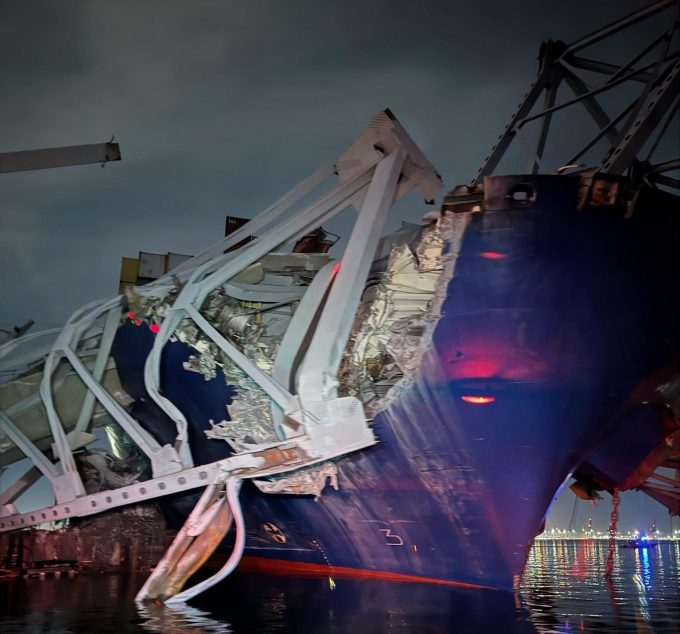Mærsk vs ONE vs Matson – the earning curve
Waiting for a bump in the road?
HLAG: BIG ORDERLINE: REACTIONLINE: EXPENSES AND OPERATING LEVERAGELINE: PIPELINE OF DEALS LINE: DEMAND PATTERNS LINE: LANDSCAPELINE: CONF CALL STARTSDSV: UNTOUCHABLEEXPD: NOT AS BULLISH AS PREVIOUSLYFWRD: SPECULATIVE RALLY MAERSK: INTEGRATED LOGISTICS WIN MAERSK: TRUMP TRADEKNIN: THE SLIDELINE: DEBUT AAPL: ASIA CAPEXDHL: THE HANGOVERXPO: ELECTION DAY RALLY BA: STRIKE OVER
HLAG: BIG ORDERLINE: REACTIONLINE: EXPENSES AND OPERATING LEVERAGELINE: PIPELINE OF DEALS LINE: DEMAND PATTERNS LINE: LANDSCAPELINE: CONF CALL STARTSDSV: UNTOUCHABLEEXPD: NOT AS BULLISH AS PREVIOUSLYFWRD: SPECULATIVE RALLY MAERSK: INTEGRATED LOGISTICS WIN MAERSK: TRUMP TRADEKNIN: THE SLIDELINE: DEBUT AAPL: ASIA CAPEXDHL: THE HANGOVERXPO: ELECTION DAY RALLY BA: STRIKE OVER

Maersk vessel Dali may have suffered a loss-of-propulsion (LoP) as it approached the supporting pillar of the Baltimore Francis Scott Key Bridge, taking down a large section of the continuous truss bridge last night.
Video footage shows lights at the bow and along the length of the 9,000 teu vessel going dark for 11 seconds, before light is restored – presumably via backup power – much closer to the Francis Scott Bridge.
A second power outage of at least seven seconds is then apparent before the lights come on once again; 22 seconds later, the vessel hit the bridge’s supporting pillar.
Footage of the manoeuvre shows the vessel drifting to port and, during the periods when the lights are on, tacking hard to starboard.
This was undoubtedly an attempt to ‘round’ the pillar – a commonly used and often successful strategy for maritime obstacle avoidance – but has, unfortunately, given rise to speculation among conspiracy theorists on social media that the ship, even with two pilots aboard, deliberately steered into the bridge support.
But two LoPs within a minute would have left the vessel in a drift toward the pillar and, even once power had been restored, there was little chance of averting its momentum.
A BBC report this morning discussed details of an “unclassified memo” from the US Cybersecurity and Infrastructure Security Agency (CISA), confirming the vessel suffered at least one LoP in the moments before the incident.
The reasons for LoPs are myriad, but the most common cause lies in quality deficiencies in ship fuel, which was linked to 600 LoP incidents during a single 12-month period recently.
At the time, FuelTrust blamed an “endemic lack of transparency, fraudulent practices and inadequate supply chain management” which pervade the bunkering industry.
Comment on this article